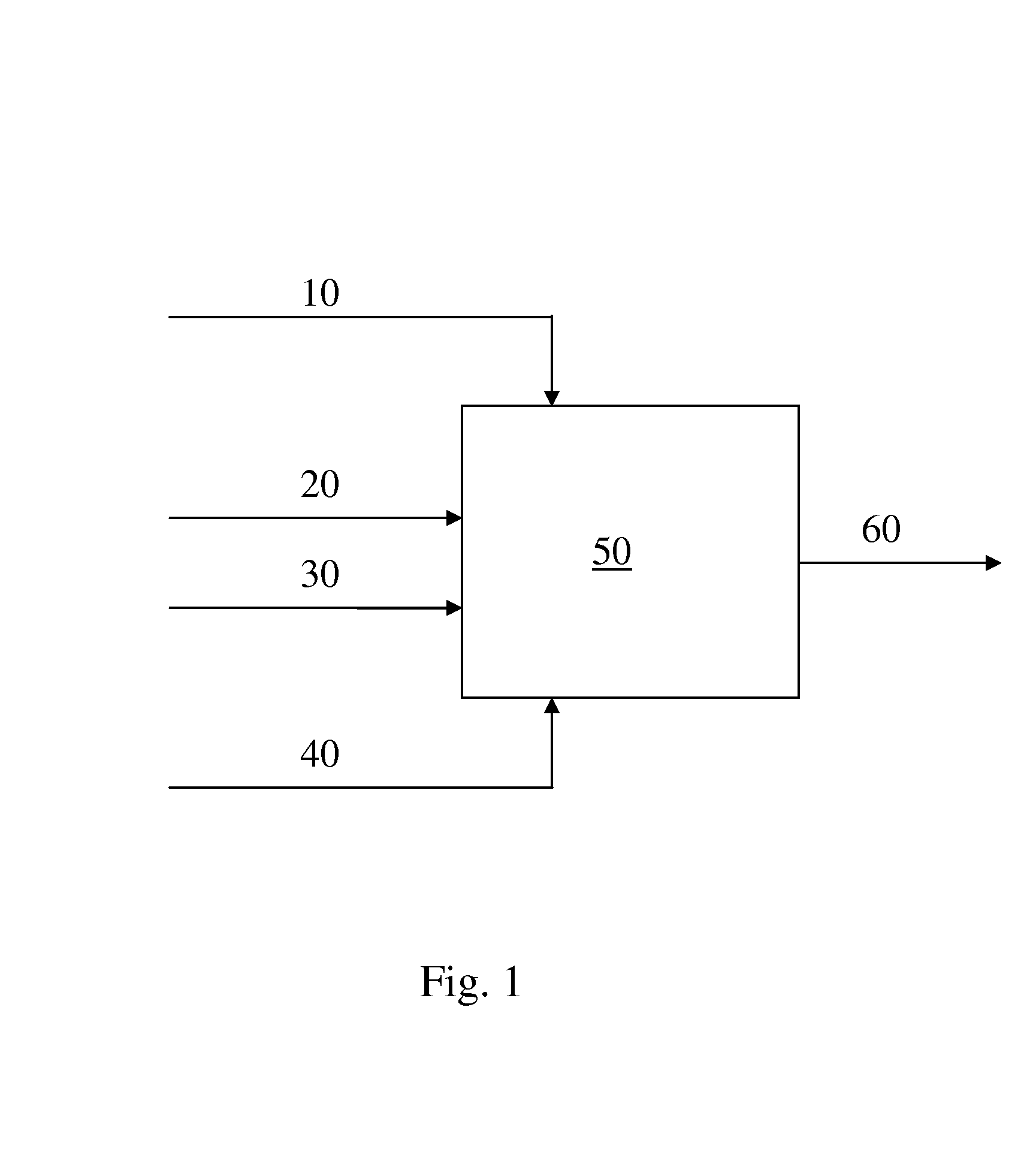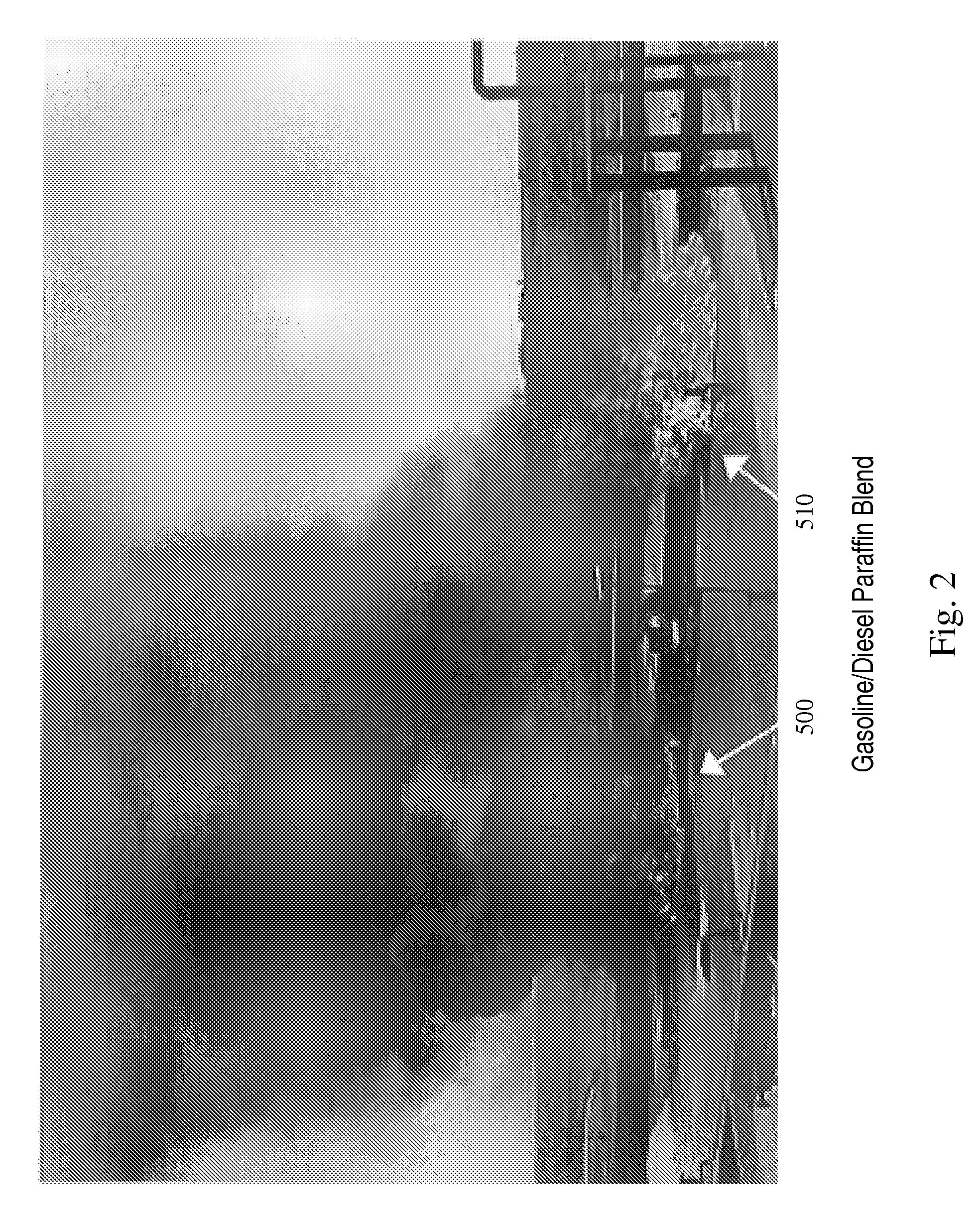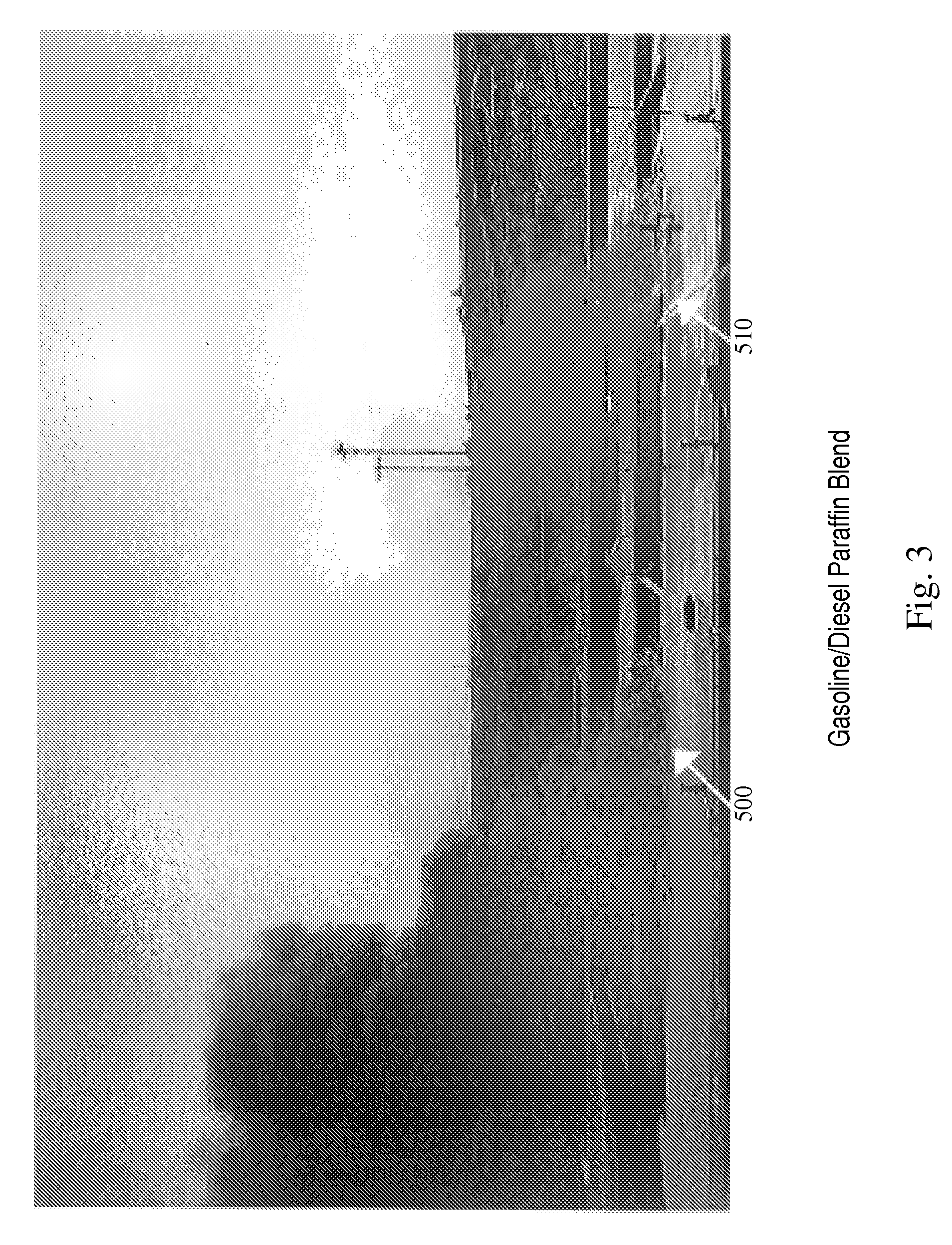Firefighting training fluid and method for making same
a training fluid and firefighting technology, applied in the field of paraffin paraffin blends, can solve the problems of reducing the use of diesel fuels, and generating hazardous waste, so as to reduce smoke emissions and keep emissions
- Summary
- Abstract
- Description
- Claims
- Application Information
AI Technical Summary
Benefits of technology
Problems solved by technology
Method used
Image
Examples
examples
[0036]The invention having been generally described, the following examples are given as particular embodiments of the invention and to demonstrate the practice and advantages thereof. It is understood that the examples are given by way of illustration and are not intended to limit the specification or the claims to follow in any manner.
examples 1-4
[0037]Examples 1-4 show paraffin blending components suitable for use in FFTFs, and gas chromatogram data for each blending component is listed in Tables 1-4, respectively. Example 1 is an isopentane blend component, Example 2 is a heavy paraffin blend component, Example 3 is a light paraffin blend component, and Example 4 is an alkylate blend component. Table 1 contains the weight percent of each component present in an isopentane blend component.
[0038]
TABLE 1Example of Isopentane Blend ComponentCOMPONENTWT %2,2-Dimethylpropane0.3Isopentane98.4n-Pentane1.2Impurities0.2TOTAL100.0
[0039]Table 2 contains the weight percent of each compound present in a heavy paraffin blend component. “C8s” represents the weight percentage of chemical compounds in the blend component having 8 carbon atoms, “C9s” represents the weight percentage of chemical compounds in the blend component having 9 carbon atoms, and so forth.
[0040]
TABLE 2Example of Heavy Paraffin Blend ComponentCOMPONENTWT %C8s3C9s14C10s...
example 5
[0045]Example 5 is an FFTF comprising a blend of the heavy, light, and isopentane blend components, as illustrated by Examples 2, 3, and 1, respectively. Data for Example 5 is provided in Table 5.
[0046]
TABLE 5Example of Paraffin Blend Including Heavy,Light, and Isopentane Blend ComponentsITEMVALUETEST METHODHeavy LV % (gallons)40.8(16,198)Light LV % (gallons)37.2(14,768)Isopentane LV % (gallons)22 (8,734)Aromatic LV %0.2ASTM D-1319Reid Vapor Pressure6.0ASTM D-323 (psi)Initial Distillation Boiling Point106.2ASTM D-86 (° F.)End Distillation Boiling Point366.6ASTM D-86 (° F.)
PUM
| Property | Measurement | Unit |
|---|---|---|
| weight percent | aaaaa | aaaaa |
| weight percent | aaaaa | aaaaa |
| weight percent | aaaaa | aaaaa |
Abstract
Description
Claims
Application Information
 Login to View More
Login to View More - R&D
- Intellectual Property
- Life Sciences
- Materials
- Tech Scout
- Unparalleled Data Quality
- Higher Quality Content
- 60% Fewer Hallucinations
Browse by: Latest US Patents, China's latest patents, Technical Efficacy Thesaurus, Application Domain, Technology Topic, Popular Technical Reports.
© 2025 PatSnap. All rights reserved.Legal|Privacy policy|Modern Slavery Act Transparency Statement|Sitemap|About US| Contact US: help@patsnap.com



